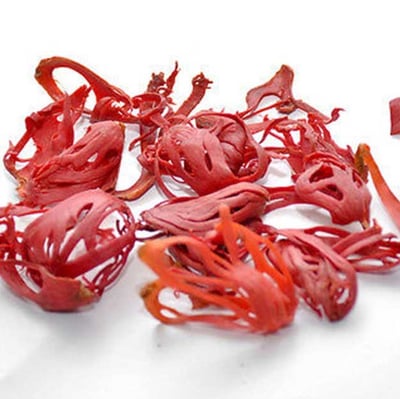A spice is a seed, fruit, root,bark, or other plant substance primarily used for flavouring or colouring food. Spices are distinguished from herbs which are the leaves, flowers, or stems of plants used for flavouring or as a garnish. Spices are sometimes used in medicine, religious rituals, cosmetic or perfume production.
Spices were among the most demanded and expensive products available in Europe in the Middle Ages, the most common being black pepper ,cinnamon, cumin, nutmeg, ginger, and cloves. Given medieval medicine's main theory of humorism spices and herbs were indispensable to balance "humors" in food, on a daily basis for good health at a time of recurrent pandemics.
SPICES
Green cardamom, or Elaichi, is a highly aromatic Indian spice that we source from plantations in south India. It is grown and processed in the Idukki gardens of Kerala. Each pod is carefully hand-picked and dried in the shade. The plants are grown naturally and free of chemicals.
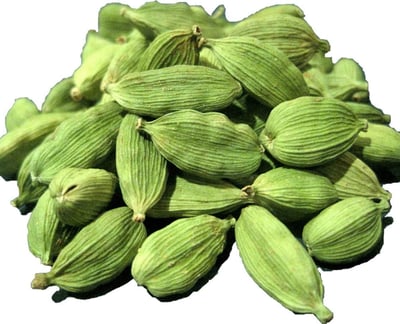

Green Cardamom
Black cardamom is a popular Indian spice, called badi elaichi or kali elaichi, that is used in many of the cuisine's signature dishes. It is in the form of seed pods, which are dark brown to black in color and take on a smokey flavor due to the way they are dried. Cardomom is used for its bold and assertive taste and is the world's third-most expensive spice, surpassed in price per weight only by vanilla and saffron. Both the pods and the seeds are used in cooking and available year-round.
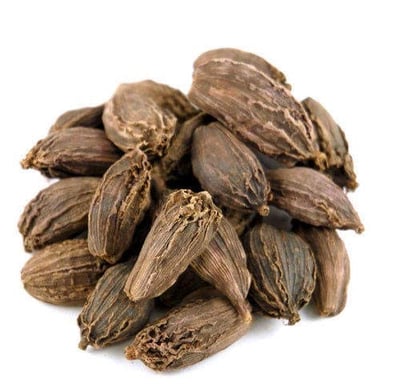

Black Cardamom
black pepper, (Piper nigrum), also called pepper, perennial climbing vine of the family Piperacea and the hotly pungent spice made from its fruits. Black pepper is native to the Malabar coast of India and is one of the earliest spices known. Widely used as a spice around the world, pepper also has a limited usage in medicine as a carminative (to relieve flatulence) and as a stimulant of gastric secretions.
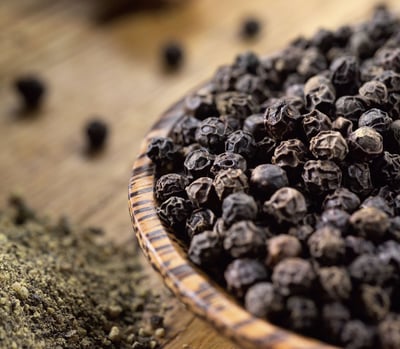

Black Pepper
White pepper is a spice produced from the dried fruit of pepper plant,Piper nigrum, as is black pepper. It is usually milder than black pepper, with less complex flavor. Both whole and ground white pepper are available.
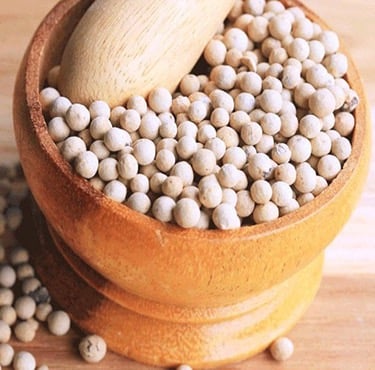

White Pepper
Clove (Syzygium aromaticum) is a tree native to Indonesia. Its dried flower buds are a popular spice and are also used in Chinese and Ayurvedic medicine.
Clove oils, dried flower buds, leaves, and stems are used to make medicine. Clove oil contains a chemical called eugenol that might help decrease pain and fight infections. Clove is also a popular ingredient in cigarettes.
People commonly use clove for toothache, pain during dental work, dental plaque, hangover, indigestion, and many other conditions, but there is no good scientific evidence to support these uses.
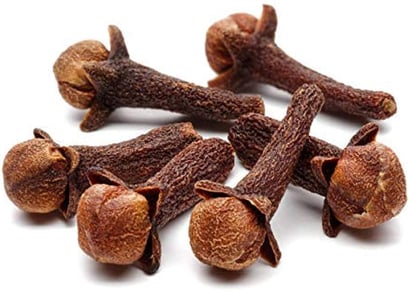

Clove
Cassia cinnamon comes from the Cinnamomum cassia tree, also called Cinnamomum aromaticum.
It originated in Southern China and is also known as Chinese cinnamon.
Cassia tends to be a dark brown-red color with thicker sticks and a rougher texture than Ceylon cinnamon.
Cassia cinnamon is considered lower quality. It is very cheap and is the type most commonly consumed around the world. Almost all cinnamon found in supermarkets is the cassia variety
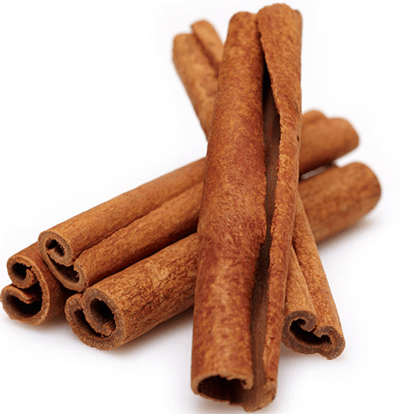

Cinnamon Roll
Ceylon, or “true cinnamon,” is native to Sri Lanka and southern parts of India.
It’s made from the inner bark of the Cinnamomum verum tree.
Ceylon is tan-brown in color and contains many tight sticks with soft layers. These features provide a highly desirable quality and texture.
Ceylon cinnamon is less common and has long been prized as a cooking spice. It is quite expensive compared to the more common cassia variety.
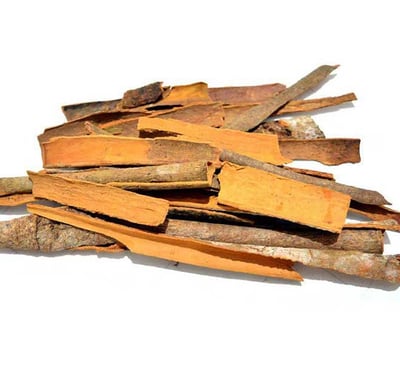

Cinnamon Stick
The bay leaf is an aromatic leaf commonly used as a herb in cooking. It can be used whole, either dried or fresh, in which case it is removed from the dish before consumption, or less commonly used in ground form.
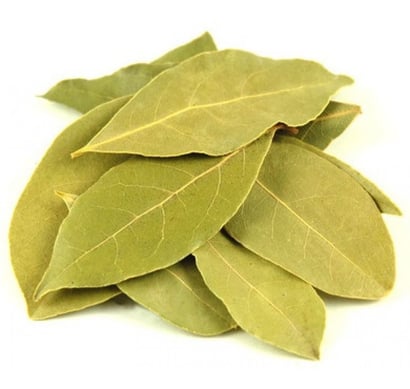

Bay leaf
Star anise is a spice made from the fruit of the Chinese evergreen tree Illicium verum.
It’s aptly named for the star-shaped pods from which the spice seeds are harvested and has a flavor that is reminiscent of licorice.
Because of similarities in their flavor and names, star anise is often confused with anise, though the two spices are unrelated.
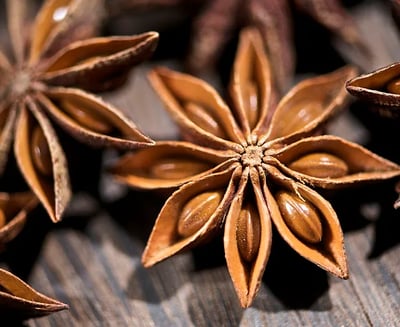

Aniseed star
The seed of Nigella sativa (N. sativa) has been used in different civilization around the world for centuries to treat various animal and human ailments. So far, numerous studies demonstrated the seed of Nigella sativa and its main active constituent, thymoquinone, to be medicinally very effective against various illnesses including different chronic illness: neurological and mental illness, cardiovascular disorders, cancer, diabetes, inflammatory conditions, and infertility as well as various infectious diseases due to bacterial, fungal, parasitic, and viral infections.
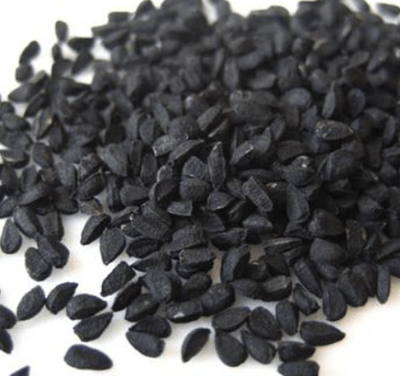

Black jeera
Shahi Jeera (also known as Sajeera or Kala Jeera) are the dark brown to black coloured caraway seeds. They are indigenous to northern Africa, western Asia, and Europe. The plant has finely split, feathery leaves with thread-like divisions that grow on 20–30 cm stems and resemble other members of the carrot family in appearance. Small white or pink blooms are arranged in umbels along the main flower stalk, which grows 40–60 cm tall. Caraway fruits (mistakenly known as seeds) are 2 mm long, crescent-shaped achenes with five light ridges.
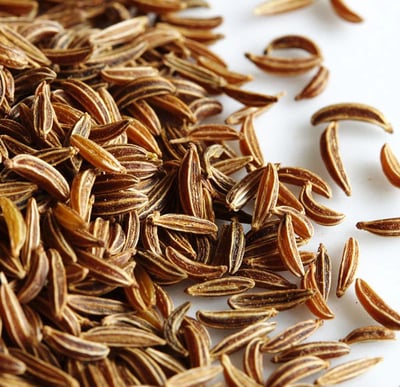

Shah jeera
Cumin, often known as jeera, is a crucial component of spices. In "PanchPhoran Masala (Indian five spice powder)," it is a key ingredient. Jeera has a strong aroma and a warm, slightly bitter flavour. The scent of these tiny seeds adds flavour to food. Jeera is a herb that can be purchased dry, ground, or in a powdered, brownish-green form. Jeera is a spice that is used to flavour meals in many other nations in addition to Indian cuisine.
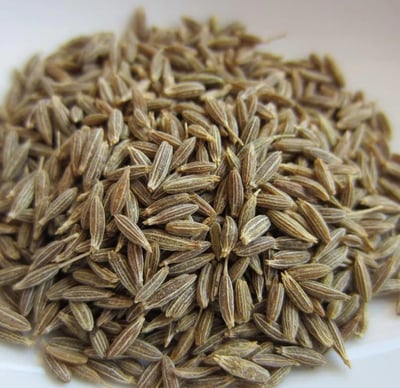

Jeera
Nutmeg is the seed or the ground spice derived from that seed, of several tree species of the genus Myristica fragrant nutmeg or true nutmeg is a dark-leaved evergreen tree cultivated for two spices derived from its fruit. nutmeg, from its seed, and mace, from the seed covering. It is also a commercial source of nutmeg essential oil and nutmeg butter.
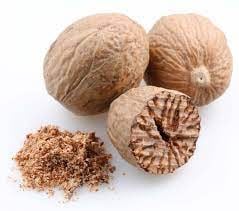

Nutmeg
Nutmace or japathre is flower of nutmeg.It is covering shell of nutmeg.
It is used in many Indian dishes,because of its flavoring nature. Kerala Japathre is very good in quality and look, because most of the production is happening from Kerala.
Nut mace is a aromatic condiment that is reddish in colour and resembles a dried flower, mace is what covers the shell of nutmeg.
